
The 6th South African Armoured Division was the second armoured division of the South African Army and was formed during World War II. Established in early 1943, it was based on a nucleus of men from the former 1st South African Infantry Division who had returned to South Africa after the Second Battle of El Alamein in late 1942. The division was initially transferred to Egypt for training, after which it served in the Allied campaign in Italy during 1944 and 1945. In Italy, the division was initially deployed as part of the British Eighth Army, under command of Lieutenant-General Oliver Leese, and was then transferred to the U.S. Fifth Army, under Lieutenant General Mark W. Clark, for the remainder of the Italian Campaign. The division operated as a strongly reinforced division and was frequently used to spearhead the advance of the Corps and Army to which it was attached. They returned home after the end of the war in Italy and were disbanded in 1946. The division was also briefly active after the war from 1 July 1948 to 1 November 1949.

32 Battalion was a light infantry battalion of the South African Army founded in 1975, composed of black and white commissioned and enlisted personnel. It was disbanded on 26 March 1993.

The Royal Canadian Dragoons (RCD) is the senior armoured regiment of the Canadian Army by precedence. It is one of three armoured regiments in the Regular Force and forms part of the Royal Canadian Armoured Corps.
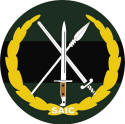
The South African Army Infantry Formation supervises all infantry within the South African Army.

61 Mechanised Battalion Group was a unit of the South African Infantry Corps; although it was classed as mechanized infantry, it was a combined arms force consisting of infantry, armour and artillery.

1 Special Service Battalion is an armoured regiment of the South African Army and only one of two such in its regular force. The Regiment is based at Tempe near Bloemfontein.

The Rhodesian Security Forces were the military forces of the Rhodesian government. The Rhodesian Security Forces consisted of a ground force, the Rhodesian Air Force, the British South Africa Police, and various personnel affiliated to the Rhodesian Ministry of Internal Affairs. Despite the impact of economic and diplomatic sanctions, Rhodesia was able to develop and maintain a potent and professional military capability.
The Order of battle of the East African campaign shows the ground forces of both sides in East Africa on the date that the Italians declared war on Britain and France, 10 June 1940 and for the British and Commonwealth forces involved in the 1941 offensive.
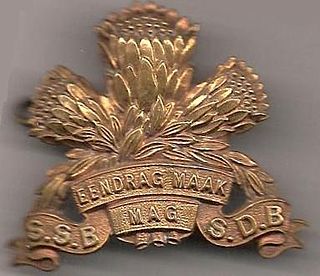
The Special Service Battalion (SSB) is a South African military unit formed on 1 May 1933 under the patronage of Oswald Pirow, Minister of Defence. The object was to give training to youths, between the ages of 17 and 23, who, in the wake of the 1929 depression, could find no suitable employment on leaving school.
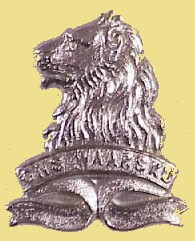
The General de la Rey Regiment is an reserve infantry regiment of the South African Army.

44 Parachute Brigade was a parachute infantry brigade of the South African Army. It was founded on 20 April 1978, by Colonel Jan Breytenbach, following the disbandment of 1 SA Corps and the battle of Cassinga. Upon formation, the brigade was commanded by Brigadier M. J. du Plessis, who was assigned the task of establishing by working with the Parachute Staff Officer, Colonel Jan Breytenbach. At the time du Plessis was the commanding officer of the Orange Free State Command and had previous experience serving in 1 Parachute Battalion. Breytenbach had also been a member of 1 Parachute Battalion and had also founded the South African Special Forces Brigade and 32 Battalion. The location that was chosen for the brigade's headquarters was in the lines of the OFS Cmd Headquarters, next to the old Tempe Airfield in Bloemfontein.
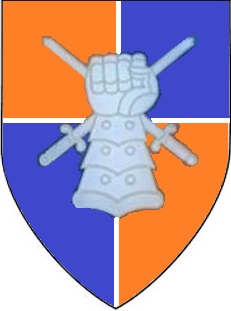
The South African Army Armour Formation provides an Armour capability to the South African Army. The Formation came into being as part of a restructure. South African Armoured Corps units previously under the command of various different brigades and other formations were all grouped under one formation. All armour is assigned to the SA Army Armour Formation under the charge of a General Officer Commanding.

1 South African Infantry Battalion is a mechanized infantry unit of the South African Army.

2 South African Infantry Battalion is a motorised infantry unit of the South African Army.

8 South African Infantry Battalion is a mechanized infantry unit of the South African Army. The battalion is equipped with Ratel Infantry Fighting Vehicles (IFV) used for fast transport and combat mobility across rough ground. Support weapons for mechanized infantry are also provided with motorized transport, or are built directly into these IFVs, in order to keep pace with the IFVs in combat. The battalion was raised at Upington in the Northern Cape in 1973, and assigned to the Infantry Formation.
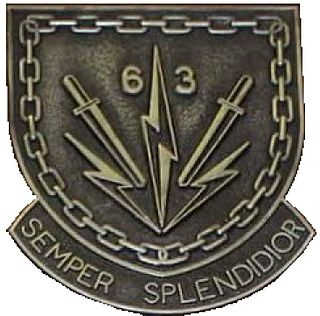
63 Mechanised Battalion Group was a unit of the South African Infantry Corps; although it was classed as mechanized infantry, it was a combined arms force consisting of infantry, armour and artillery. Together with 61 Mechanised Battalion Group and 62 Mechanised Battalion Group, these units made up 60 Brigade encompassing battlegroup principles.

10 Armoured Car Squadron was a contingent of the South African Armoured Corps posted in Sector 10, South West Africa, during the South African Border War.

81 Armoured Brigade was a Formation of 8th Armoured Division, a combined arms force consisting of armour, mechanised infantry, and mechanised artillery.





















